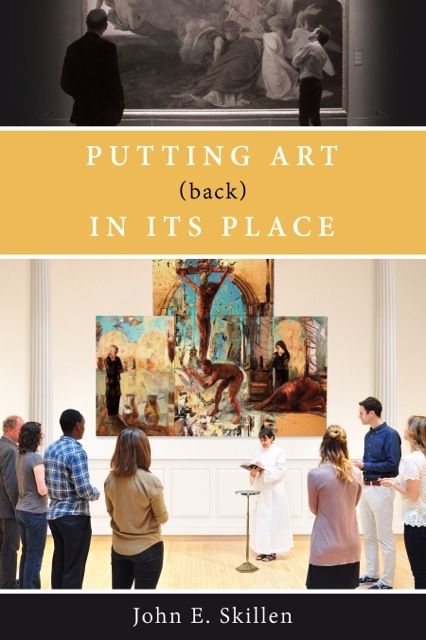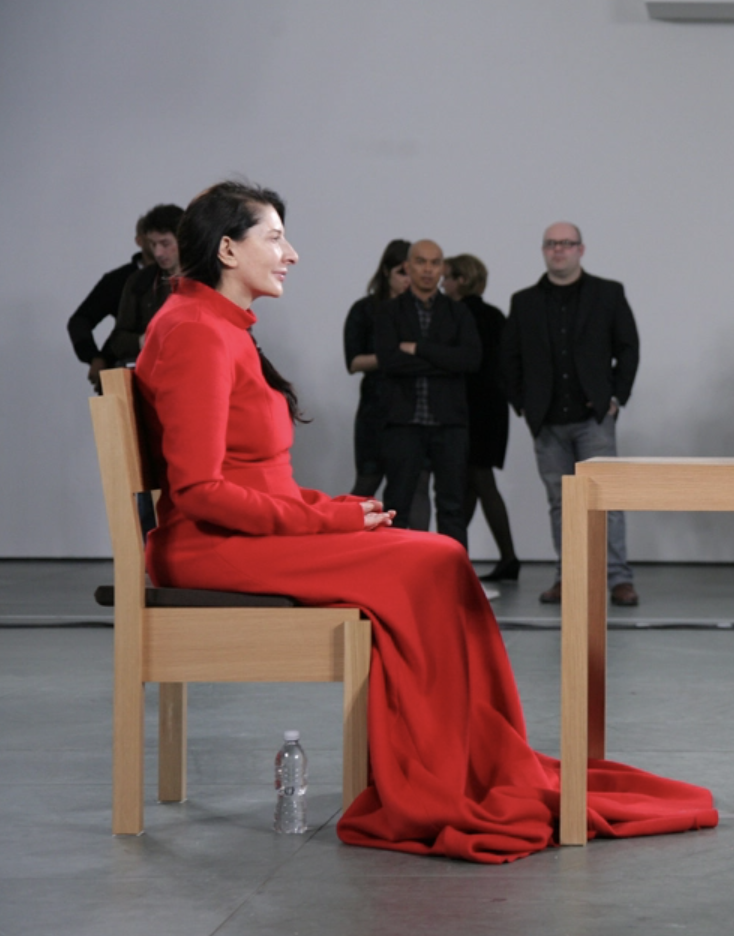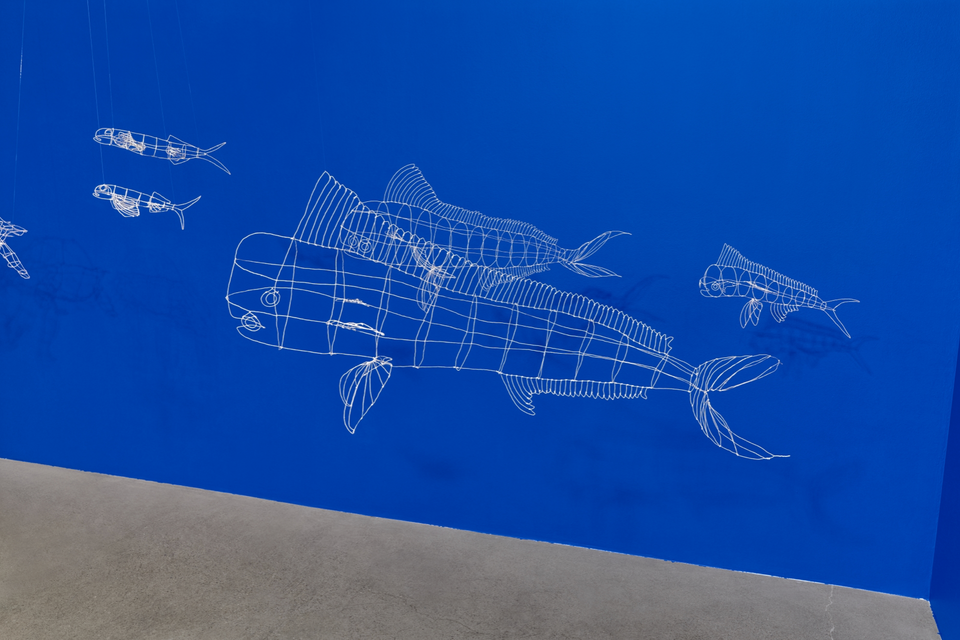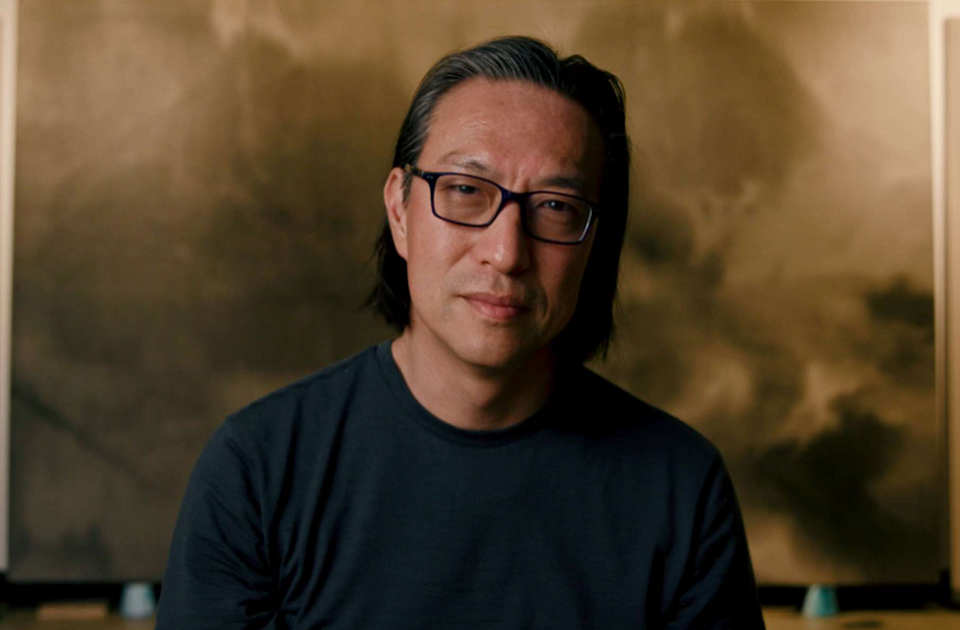Gordon College’s Dr. John Skillen is a rare sort of academic: the kind with road dust on his shoes instead of chalk dust on his elbow patches. As he explains in the introduction to his new book, Putting Art (back) In Its Place, his interest in Italian Renaissance art began not in a lecture hall but on a family camping trip in Europe. “For me,” he recalls, “fresh from reading Irving Stone’s The Agony and the Ecstasy, our slow journey through Italy was a pilgrimage from one Michelangelo masterpiece to another.” Skillen was twelve at the time, and the notion that a boy of that age would have bought and devoured a lengthy biographical novel about Michelangelo is sobering. It signals to us an adherent and adventurous intellect: one equipped with a natural sensitivity to beauty and a rare desire to understand art within its biographical and physical contexts.
These faculties carried him to a busy career as a professor of English at Gordon College and Director of the Gordon in Orvieto Program, a residential study-abroad semester that combines immersion in an Italian monastery with intensive art and humanities classwork. Skillen’s dream, according to an article on the college’s website, was to provide “a venue for the integration of arts, faith and history.” He cultivated that dream by establishing relationships with the clergy and artists of Orvieto, and finding a way to fold his students into their world as contributors rather than observers. He discovered what too few academics have: that a coach-section seat in an airplane is as good a place to read as the chair of a third-story office, and that scholarship divorced from experience is as impotent as it is boring.
Putting Art (back) In Its Place, falls squarely within that practical range of concern. Skillen’s offices have been the streets, monasteries, and duomos of Italy. His lectures take place in the de Medici’s frescoed family chapels, in front of actual artworks rather than projector transparencies. This approach to art scholarship has left Skillen with a rich sense of “…the relationships once operative between the physical setting of installed artworks and the particular actions performed in those settings…” His book argues that we cannot fully appreciate, or even adequately comprehend, the art of the Italian Renaissance without understanding these architectural, narrative, and liturgical contexts.
The modern mind, he explains, has been trained to view artworks as self-contained. We move them thoughtlessly from museum to museum or from studio to home because our evaluation is based solely on what falls within the frame. Artists and viewers in the Renaissance thought differently. As Skillen explains, at that time
…the aesthetic element (of an artwork) was evaluated for how well it did its job in helping the participants’ response match the purpose of the action that the artwork served. In short, beauty was seen as functional, not as something freed from functionality and enjoyed for its own sake.
Chapter by chapter, Skillen explains how Italian Renaissance art was commonly used as a point of reference during worship services. It embellished the pulpits of preachers and gilded baptismal fonts. Frescoes on the walls of private chapels reminded wealthy families that God’s economy values only the rich in spirit. Nestled next to the windows of monks, art taught them the ideal postures for prayers of exaltation, petition, or thanks. Naturally, the financiers who commissioned such art and the artists who made it took these purposes into consideration. Those of us, Skillen points out, who hope to appreciate the results of their labor cannot therefore view it in isolation.
To resolve our decontextualized approach to art, Skillen systematically examines dozens of paintings, sculptures, carvings, and frescoes, focusing not on their formal elements so much as their relationship to the buildings, people, and uses that helped define them, and which they in turn helped to define. The result is a lively and refreshing book that invites us to consider art’s potential to shape communities, alter surroundings, and interact with its contextualizing space.
His phrase for that sense of art’s connection to its context is in situ (a Latin term for “in its original place”), a term that sums up his technical approach: each chapter and section of the book literally seeks to put a work of art back in its place for the reader. One example of this process is his treatment of Masaccio’s Expulsion of Adam and Eve, a famous image of the original couple’s grief as they are cast out of Eden. In textbooks, Skillen explains, “The photographs of Masaccio’s Expulsion…are very often cropped so as to erase its location in situ.”
In fact, the painting is located on the top half of a pillar that frames the entrance to the private chapel of the influential Brancacci family. Across from it, frescoed on the opposite pillar, is Masolino’s Temptation of Adam and Eve Before the Fall. As a Brancacci entered the chapel, a place where the Catholic liturgy of the time would begin by asking him to confess his sins, he would be flanked by the “before and after” of man’s original sin in vivid colors on either side. In Skillen’s words, “The paintings not only frame the entrance physically but would have been understood to “frame” thematically the whole programme of the chapel.”
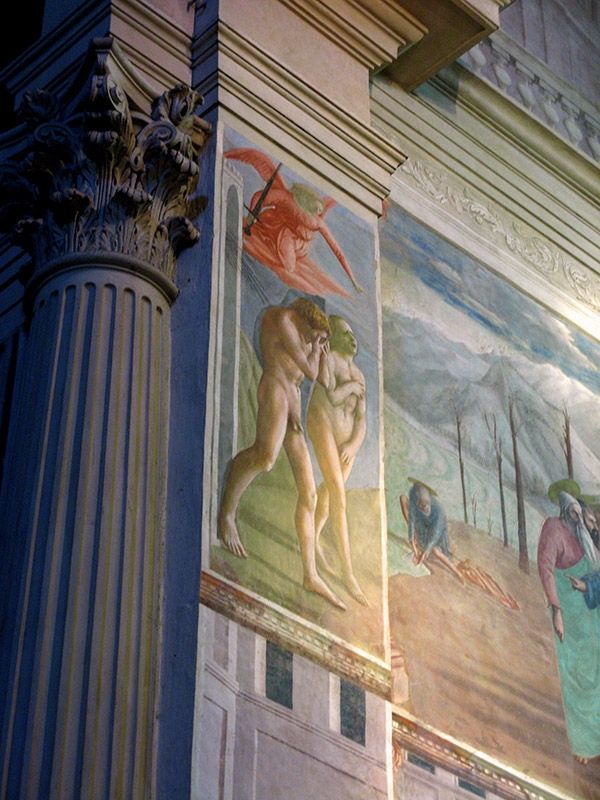
Written with lively clarity and accompanied by a website that provides images of the paintings as well as detailed study questions, Skillen’s book offers insight that extends beyond its area of specialization. An informative and often dazzling explanation of Renaissance Italian art, the book encourages a countercultural view of what art might be to us: a communal and spiritual touchstone rather than a decorative or economic object. Skillen encourages us “…to appreciate the capacity of art to articulate the purposes of the places in which (we) gather, to support the work of the people in and for the society in which (we) live, and to vivify the stories that inform and inspire (our) sense of identity.”
This positive argument is both intriguing and inspiring. But if the book has a flaw, it is that it is couched in a too-generalized critique of the modernity which eventually followed the Renaissance’s culture of liturgically-integrated art. In his chapter “Recovering a Sense of Liturgy,” Skillen quotes George Steiner’s observation from In Bluebeard’s Castle that “The lapse from ceremony and ritual in much of public and private behavior has left a vacuum.” Skillen adds that
The vacuum is often filled in youth culture by the anti-liturgies of ‘hanging out,’ of vegging rather than willfully and decisively doing something together. The vacuum fosters the language of ‘whatever’ to mark an attitude of purposeless passing of time, as in ‘Waddya wanna do tonight, it’s Friday?’ ‘Oh, whatever…just hang out.’
The tone here has shifted from Skillen’s typical scholarly sharpness to that of a curmudgeonly rant. The hypothetical teenage conversation he creates, with its purposeful misspellings, falsely reproduces the “slang kids are using these days,” and might make us suspect that the “vacuum” Skillen senses arises not from an absence of meaning in modern life, but from a benevolent insensitivity to the transformed mechanisms by which meaning is received and transmitted in modern culture.
Often, Skillen references specific artifacts from Modernist art to clarify this critique. But such references can be a little troubling. Only a few paragraphs after his discussion of modern teenage “anti-liturgy,” he quotes the end of W.B. Yeats’s poem “The Second Coming.” In Skillen’s transcription, the last line ends (the italics are his) “’…what rough beast…slouches toward Bethlehem.’” with a full end-stop after that final phrase. Just afterward, he argues that Yeats’s poem “captures a sense of the lethargy and purposelessness” characteristic of modern life, where we “…interrupt presence and attentiveness in… a conversation at the coffee shop or in a worship service at church with a quick check of Facebook.”
However, the poem actually ends “And what rough beast, its hour come round at last, / Slouches towards Bethlehem to be born?“ The last three words, eliminated in Skillen’s quotation, tie the poem to Yeats’s complex view of history, articulated in his trippy pseudo-philosophical treatise A Vision, as a cycle of violent and peaceful ages. Yeats’s poem is not a flat criticism of modern life but an apocalyptic vision of a new age inspired by unchristian violence (represented by the beast) instead of Christlike mildness. The beast isn’t “slouching towards Bethlehem” because it is uninterested in church, it’s slouching because it’s a beast.
But however hasty Putting Art (back) In Its Place can be in its critique of modernity, what a millennial like myself, prone to doing “whatever” more than I’d like to admit, can learn from it far outweighs any reasons for skepticism. Skillen’s vision of Renaissance Italy, where parades were held to commemorate the installation of new paintings of the Madonna, or the liturgical calendar ”…framed the passage of time not as chronos-time but as kairos-time—time experienced not as flat sequence but rather with narrative direction, with opportunities to be grasped and occasions to be celebrated,” is striking in its power and clarity.
Whether or not we are compelled by the idea of a life famed by liturgy, Skillen’s ability to evoke a culture in which art enlivened, organized, and commented on the life of a whole society will certainly make us skeptical of the hermetic atmosphere of the modern art museum, and of privatized art in general. By calling our attention to art’s context, Putting Art (back) In Its Place challenges us to create a culture more sensitive to its graces, where focus and presence are valued over productivity and ubiquity—in short, the culture we, with our farmers’ markets, “shop small” festivals, and resurgence in community artwork, are so clumsily longing to find again.

